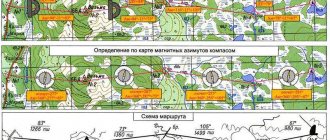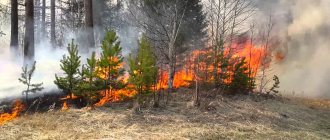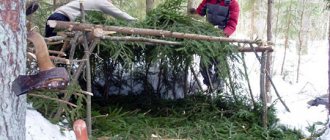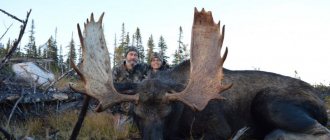Hiking is a type of active recreation. They are classified by type, duration and purpose. For some, a hiking trip means conquering a new peak and increased stress; for others, it’s a joint holiday with friends in the fresh air.
If you are thinking about taking the path of tourism, determine what type of activity you can handle. Do not hesitate to ask advice from more experienced comrades and do not be upset if you do not understand something. After all, even experienced travelers once went on their first hiking trip...
Classification of hiking trips
Any hiking trip, regardless of the difficulty category of the route, requires certain skills and suitable equipment.
And in order not to waste time and money on purchasing obviously unnecessary things, first of all, figure out the purpose of the trip: testing your own capabilities or active recreation in the clean air?
Types of tourist trips vary in level of difficulty, duration, nature and purpose.
Tourist routes are classified according to:
- method of crossing (on foot, on skis, by bicycle, by car, by boat, by train, etc.);
- travel purposes (sports, scientific, religious, health, educational);
- duration (short-term, medium-term, long-term);
- season (year-round, warm season, winter);
- the contingent of participants (school, youth, family, professionally oriented);
- form: linear - the beginning and end of the path are in different places, circular - the starting point and the end point of the path coincide, radial - periodic exits are made from the established camp.
In the process of preparing for a hiking trip, it is classified into one of 6 categories of difficulty. Criteria: duration of the tour, length of the route, requirements for the physical training of participants.
Note!
Proper organization and conduct of the trip will help you avoid injuries.
Next, we will look at the types of tourism that are among the most popular and interesting trips.
Hiking (traverse)
A form of sports tourism that involves covering a designated route without the use of transport. This is an active holiday without ultra-expensive bells and whistles, so people with any financial capabilities can “walk”.
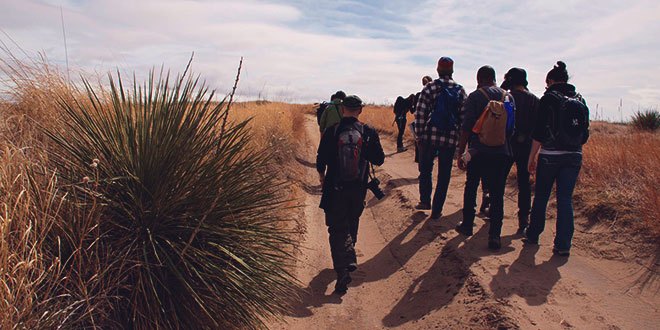
Hiking involves covering a route without the use of transport.
The basis is a tent, shoes and clothing appropriate for the season (for winter outings it would be nice to get hold of a sleeping bag and a rug). The rest of the equipment is selected depending on the needs of the participants and the conditions of the trip.
Note!
When developing a tourist route, wisely divide the expenditure of energy, avoiding long transitions at the beginning and end of the journey. When planning your movement, determine places for overnight stays and parking in advance.
Mountain trekking
The path is laid on gentle slopes or in the highlands. As with a hiking trip, group members do not use transport.
But a number of differences put mountain crossings into a separate category:
- Not only the distance traveled is significant, but also the number of passes crossed and ascents.
- Routes through the mountains pass at an altitude of 2500 km above sea level.
- By dividing the hike into two stages, you will be able to ascend and descend along two different roads.
Experienced, physically strong and stress-resistant tourists go on mountain climbing. For beginners, special preparation for a mountain hike is a matter of life and death.
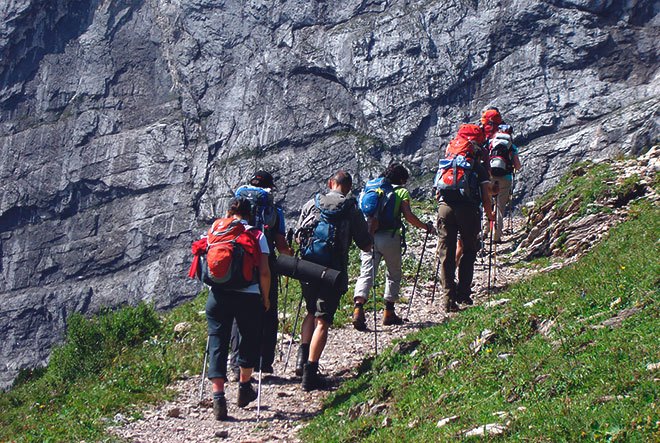
Experienced, well-prepared and physically strong tourists always go on mountain trips.
Having reinforced the acquired skills with equipment and special tourist devices, you will pass difficult areas with minimal risk.
Water trips or rafting
A travel option that involves covering a route along rivers and lakes using the following floating equipment:
- Raft (wooden structure equipped with inflatable parts).
- Catamaran (two inflatable elements connected and fixed to the frame).
- Kayaks (a shell stretched over a frame).
- Inflatable boat made of rubberized material.
GERMA (HERMOBAG, HERMOCOAC)
You can put things there so that they don’t get wet, even if they fall into the river. They are the size of a backpack - for things and a sleeping bag (first of all!), and there are very small ones - for a mobile phone and documents. It is advisable to have both.
There is even a special herm for toilet paper :) It is convenient if large herms are equipped with a valve - it is more convenient to bleed off excess air in the bag, and they have a transparent window - you can see what is inside.
Do not take dense, thick large herms. They are designed for rafting, designed for you to take them out of the kayak and throw them on sharp rocks. What you need is a lightweight, flexible jacket that won’t take up much space in your backpack and weighs little. You will carefully remove it to the foam in the tent.
I also advise you to read the article on the Sports Marathon Blog about choosing pressurized bags.
Is it worth buying an expensive waterproof bag on your first trip? No. The germa from Aliexpress will also cope with its task.
General rules for hiking trips
Responsibility for compliance with safety rules lies not only with the leader, but also with each participant in the trip. Only through joint efforts can we avoid force majeure and enjoy an exciting journey without risking our lives.
Note!
In some places, lighting a fire is prohibited. To avoid causing a fire or paying a hefty fine (ignorance of the law does not exempt you from liability) , find out the local rules in advance.
To be safety savvy when going on a hiking trip, learn the following rules:
- Each group member complies with sanitary and hygienic standards.
- It is prohibited to harm the environment, leave garbage behind, or use household chemicals near water bodies.
- Sections with unsafe obstacles (steep descents, sharp river rapids, etc.) are not included in the route. If you cannot get around them, use insurance when crossing them.
- If there is a fire that cannot be put out, retreat to a safe distance and call the fire brigade.
- When traveling in an unfamiliar country, avoid close contact with locals and do not photograph them without consent.
- On a route that runs through populated areas, you can become a victim of thieves. Therefore, leave your valuables at home, dress discreetly and simply.
- Boil water obtained from local sources, and discard any swollen or questionable canned goods.
Those suffering from chronic pathologies should consult their doctor to see if it is possible to participate in a hike. Each participant must be instructed on first aid, fire safety rules, behavior during a thunderstorm, on water, etc.
THERMAL UNDERWEAR
It should fit the whole body. Otherwise it doesn't work. Contrary to popular belief, it is not needed to provide warmth, but to remove moisture from the body. Choose thin, sweat-wicking models. The top (jacket) is often needed, the bottom (pants), I personally only wear at sub-zero temperatures. Wool thermal underwear does not last long and wicks moisture away worse; choose pure synthetics.
Read more about thermal underwear on the Sports Marathon blog.
To travel in the mountains you need thermal underwear:
- with long sleeves - the fabric is more reliable than cream, protects the skin from the sun;
- light - if the thermal underwear is black, you will be very hot due to high solar activity in the mountains.
T-shirt made of cotton fabric. One T-shirt is worth taking as clean clothes on a plane or train . There is no need to walk in it. Cotton fabric, when wet, begins to conduct heat well and you feel cold. Everyone knows that disgusting cold t-shirt fabric that sticks to your skin? Cotton takes a long time to dry. Wet cotton doesn't breathe well, causing you to sweat more. Good thermal underwear does not have these shortcomings.
Is it worth buying expensive thermal underwear on your first trip ? No. It's more important that it works correctly.
Organization of a tourist trip
The hike can be scientific-educational, military-patriotic, excursion or any other nature. Moreover, even a weekend outing should have a clear goal communicated to each participant.
The purpose of the training trip is to teach beginners how to make fire in autonomous conditions, tell them how to set up a tent, determine their location, act correctly in an extreme situation, etc.
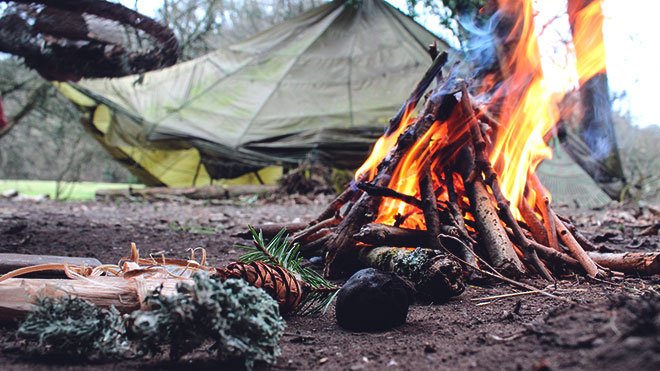
The purpose of the training trip is to tell and show beginners how to make fire in autonomous conditions, teach how to pitch a tent, and navigate the terrain.
The purpose of a sports hike is to follow a route using a compass, overcome obstacles, conquer stormy rapids, snowy passes, etc.
On a note!
Tourist walks have a beneficial effect on well-being and psycho-emotional state, which means that the main goal of any trip can be considered health improvement.
Group recruitment
Method number 1 : first determine the purpose of the trip, then recruit a group of suitable people.
Method No. 2 : a feasible goal is selected for an already assembled group of willing people.
Group organization
Having completed the group, the leader holds a meeting at which he talks about:
- the purpose of the trip and its duration;
- route (if developed);
- budget (amount of contribution for each);
- necessary equipment and equipment.
Responsibilities are distributed among experienced team members. The head of finance and provisions is selected. He also buys travel tickets (if you need to travel by transport) and leaves a hiking menu.
A person with first aid skills is required. He carries a first aid kit throughout the entire trip.
Choosing equipment for a hike
Novice tourists try to take as many things as possible, and then languish under the weight of a bloated backpack. Such a hike brings nothing but back pain and monstrous fatigue. To make the most of your time, learn to do the bare minimum.
Your backpack should contain:
- Things for the night.
- Personal hygiene products.
- Cooking supplies.
- Devices for orientation: GPS - navigator (stock up on a good old paper map and compass, because the miracle of technology can run out of charge or break).
Interesting fact!
During the Robinsonade held in Karelia, there was a rule: a single tourist remaining on the island was allowed to choose only 7 items. Almost everyone chose one set - hooks, fishing line, knife, axe, bowler hat, sleeping bag. A daily supply of provisions and a walkie-talkie were issued (so that Robinson could announce his return to the mainland). Some managed to survive for 10 days. They ate caught fish and collected forest products. This story is to ensure that when packing your backpack, you make the right accents.
The organizer checks the contents of each backpack or helps collect equipment.
Food for a hike or what food to take on a hike
The supply of food and menu depends on the number of participants, duration, and complexity of the route. Hiking itself is a physical activity during which the body expends a lot of energy. And food will help replenish energy.
Follow the cheat sheet:
- determine the menu for every day;
- create a list of products for each dish;
- calculate the amount of provisions for the entire period of the trip (taking into account the menu, the number of participants);
- make a list and distribute provisions between participants, taking into account the physical capabilities of each (note that a woman’s backpack weighs 30% less).
The more varied the food on a hiking trip, the more beneficial it is for the body. Eat meals three times a day: hot food in the morning and evening, packed lunches at lunch.
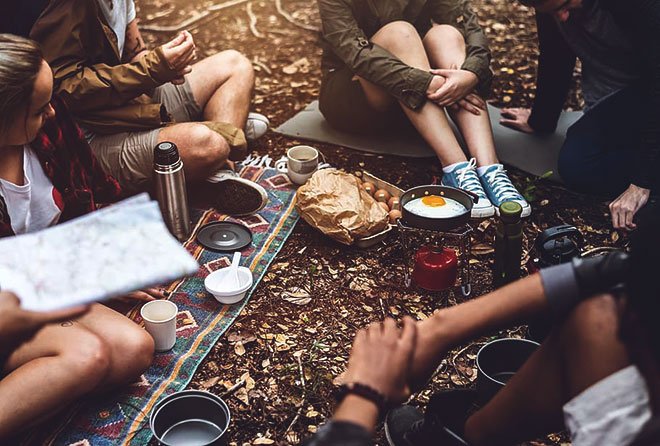
Short trips are undemanding when it comes to food supplies, but the nutrition plan for a long trip must be thought out.
When purchasing provisions, consider expected loads, weather conditions, and the following:
- the average daily intake per group member is 3 thousand kcal;
- single dose for an adult: 70 g of stew, a piece of bread, 80 g of pasta or cereal, 5 g of tea, 25 g of sugar;
- weight of daily ration per person: 0.9 – 1.2 kg (the longer the trip, the less).
HEAD FLASHLIGHT
My separate article about lanterns is HERE.
It’s better to go straight to a bourgeois company (Petzl, Fenix or BlackDiamond) for normal money - it will be cheaper than buying Chinese disposable ones for 100 rubles. But it will still be useful on the farm. Leave a hand-held (not headlamp) lamp at home unless you want to look like a disabled person who can perform useful tasks with only one hand.
If you love nature (you don’t want to throw away used batteries) and your own wallet, buy a portion of batteries for your flashlight. The best ones in terms of price/quality ratio are sold in Ikea, both AA and AAA. Read more about batteries HERE. They can also be charged in the field.
Should you buy an expensive flashlight on your first trip? No. But then buy a good one, it will be useful on the farm, even if you don’t go hiking.
Ensuring safety while hiking
It is very important that a hiking trip filled with impressions does not end in a hospital bed. Much depends on the qualifications of the instructor and the attentiveness of the group members.
Moreover, the biggest danger is open fire:
- Do not light fires under trees or near peat bogs.
- Make sure that the increased wind does not spread the flame to surrounding objects or dry grass.
- Cover the area with stones to prevent the spread of fire.
- When leaving camp, fill the fire pit with water.
TROUSERS
Basic pants: must be without insulation, breathable, durable and not easily soiled. With secure pockets on the sides. A back pocket is not needed on a hike - it only prevents your butt from drying.
The best material for basic pants is quick-drying synthetics. Such pants are sold in tourist stores under the name “route” or “Soft Shell”, or “5th layer” from the military. It's not hot in them, they dry instantly right on the body. They are only afraid of the sparks of the fire.
If you are going to walk a little and hang out more under a tent by the fire (trips to barbecues in the forest), then it is better to take pants with a high cotton content - such pants deteriorate more slowly from sparks.
Second trousers (optional): “maple”, water- and windproof, or even better, membrane trousers, so that they can at least somehow breathe. Also without insulation. Sometimes such pants are called “storm” or “Hard Shell”, or “6th layer” for the military. They will come in handy if you expect prolonged rainy weather. It is very convenient if such pants can be taken off or put on without removing the boots and main pants. These pants are called “self-release” - they have zippers on the sides along the entire length of the leg.
If you add thermal underwear to your route pants in winter, you will be fine down to -10 degrees or less.
About the color: it is better to choose some kind of greenish khaki color so that the dirt is not so noticeable


